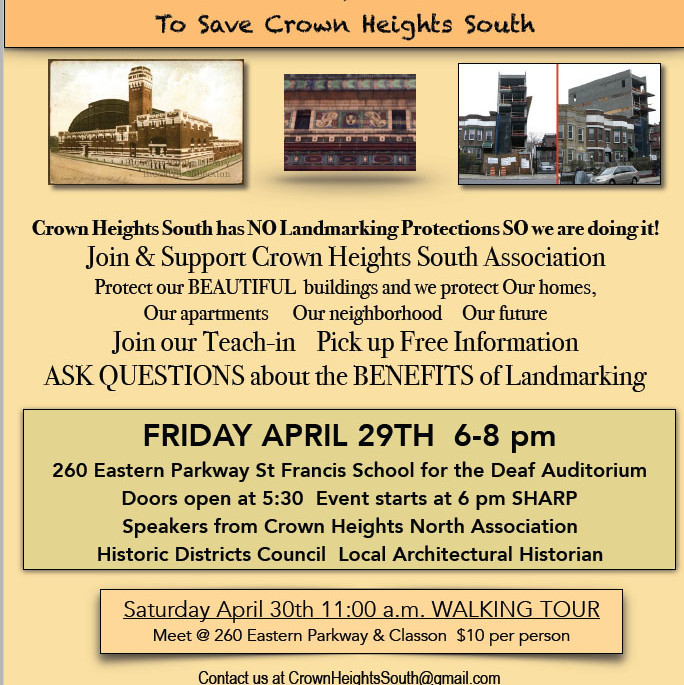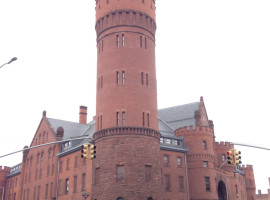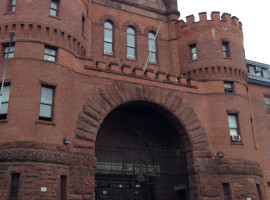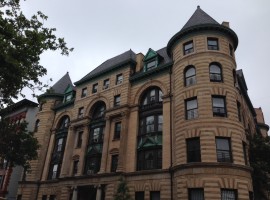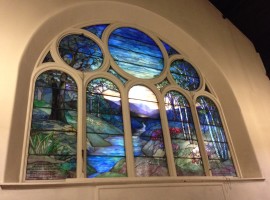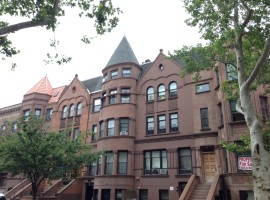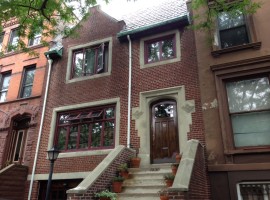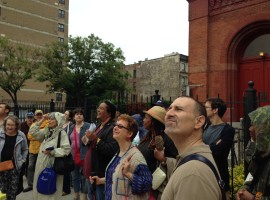
Author Archives: admin

2016 Six to Celebrate Launch Party
Introducing the 2016 Six to Celebrate!
Six to Celebrate annually identifies six historic NYC neighborhoods that merit preservation. These will be priorities for HDC’s advocacy and consultation over a yearlong period.
To learn more about the 2016 Neighborhoods click here
To honor our new Six to Celebrate we will be hosting a party at the South Street Seaport Museum’s Melville Gallery at 213 Water Street on January 28th at 6 pm!
To register for the event click here
Audubon Park, Manhattan

Clay Avenue, The Bronx

Crown Heights South, Brooklyn

East New York, Brooklyn

Richmond Hill, Queens

Yorkville, Manhattan

Support for Six to Celebrate is provided by the New York State Council on the Arts with the support of Governor Andrew Cuomo and the New York State Legislature and by public funds from the New York City Department of Cultural Affairs in partnership with the City Council and New York City Councilmembers Inez Dickens, Daniel Garodnick, Vincent Gentile, Corey Johnson, Ben Kallos, Mark Levine, and Eric Ulrich.
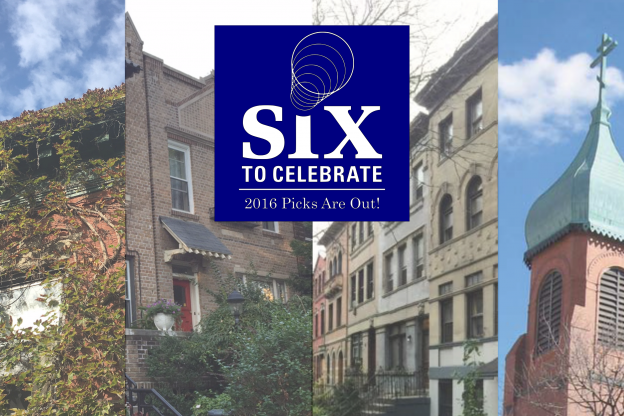
2016 Six to Celebrate Launch Party
Introducing the 2016 Six to Celebrate!
Six to Celebrate annually identifies six historic NYC neighborhoods that merit preservation. These will be priorities for HDC’s advocacy and consultation over a yearlong period.
To honor our new Six to Celebrate we will be hosting a party at the South Street Seaport Museum’s Melelville Gallery at 213 Water Street on January 28th at 6 pm!
Audubon Park, Manhattan

When the Audubon Park Historic District, characterized by large apartment buildings dating to the early 20th century, was designated in 2009, 626-648 West 158th Street was unfortunately left out. These 12 rowhouses were built earlier than the rest of the district, thus representing an earlier phase of development and an alternative vision of how the area should be developed as transit moved northward at the turn of the 20th century. The Riverside Oval Association is compiling a request for evaluation to the Landmarks Preservation Commission (LPC) to expand the historic district to protect this deserving row.
Clay Avenue, The Bronx

The Clay Avenue Historic District encompasses both blockfronts on Clay Avenue between East 165th and 166th Streets in the Morrisania section of the Bronx. The block sits on land that had previously been a horseracing track called Fleetwood Park, and its residential buildings were the earliest to be constructed on the property. In recent decades, economic disinvestment has plagued the block, but local residents are working, under the name Clay Avenue Historic District, to improve public safety, encourage building restoration, and cultivate support for neighborhood beautification.
Crown Heights South, Brooklyn

In response to rapid changes in Crown Heights South and the successful preservation efforts of their neighbors in Crown Heights North, the Crown Heights South Association formed in 2015 to work toward a similar success story. Crown Heights South is characterized by its charming rows of early 20th century houses, stately apartment buildings, and the imposing Bedford Union Armory serving as a grand anchor. The group will survey and document the area, perform community outreach, and compile a request for evaluation to the LPC for landmarks and historic district consideration.
East New York, Brooklyn

Unveiled in 2015, the city’s East New York Community Plan to rezone sections of East New York and Cypress Hills for mandatory affordable housing has left many wondering about the neighborhood’s historic resources. A new group, Preserving East New York, has formed to tackle this issue and to advocate for planning that includes the protection, restoration, and reuse of some of the area’s treasured buildings. The group will identify and highlight endangered structures, build community support for their preservation, and work with the city to protect them.
Richmond Hill, Queens

One of the first planned communities in New York City, Richmond Hill has a strong sense of place that is most noted for its wood-frame, Queen Anne style houses. The Richmond Hill Historical Society has led the effort to preserve portions of the neighborhood for decades, but with renewed energy and supportive elected representatives, a comprehensive survey will be undertaken in 2016 to determine boundaries of a potential historic district. In addition to this survey work, the Society will work to raise awareness of the area’s history and architecture through outreach, programs, and tours.
Yorkville, Manhattan

Formerly an industrial waterfront neighborhood, Yorkville is relatively isolated due to its distance from the Lexington Avenue subway, but change is inevitable with the Second Avenue subway under construction. The area’s historic resources, a mix of townhouses, tenements, high-rise residential towers, and grand institutions, have been well documented by Friends of the Upper East Side Historic Districts. Friends and HDC will advocate for landmark designation and celebrate Yorkville’s immigrant heritage through a series of educational programs, including a spring conference featuring cuisine from some of the area’s storied immigrant establishments.
Support for Six to Celebrate is provided by the New York State Council on the Arts with the support of Governor Andrew Cuomo and the New York State Legislature and by public funds from the New York City Department of Cultural Affairs in partnership with the City Council and New York City Councilmembers Inez Dickens, Daniel Garodnick, Vincent Gentile, Corey Johnson, Ben Kallos, Mark Levine, and Eric Ulrich.

Crown Heights North Tour 11.14.2015
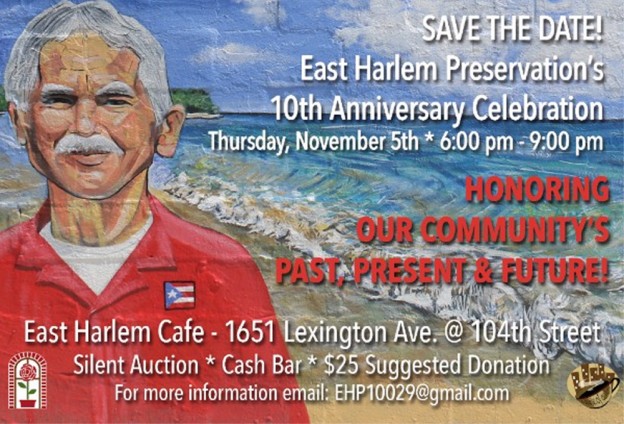
East Harlem Preservation, Inc. 10th Anniversary Celebration: Honoring Our Community’s Past, Present & Future!
East Harlem Preservation, Inc. 10th Anniversary Celebration
Please join the East Harlem Preservation team on Thursday, November 5th as we celebrate our 10th year of community service and advocacy at the East Harlem Café from 6-9 p.m. Click here to RSVP or make a donation.Enjoy a variety of delicious food from local restaurants, cash bar, raffle prizes, silent auction, and live entertainment as you support our continued efforts to preserve and promote the neighborhood’s culture and diversity.
We thank you and look forward to celebrating our community’s past, present and future with you on November 5th!
WHAT: East Harlem Preservation, Inc. 10th Annual Celebration!
WHEN: Thursday, November 5th from 6-9 pm
WHERE: East Harlem Cafe, 1651 Lexington Avenue @ 104th Street
For more information, email: EHP10029@gmail.com.
Artwork: East 107th Street mural of Puerto Rican political prisoner Oscar López Rivera by Natalie del Villar, Marthalicia Matarrita, and Xen Medina; commissioned by East Harlem Preservation, Inc. with support from the Historic Districts Council.
|
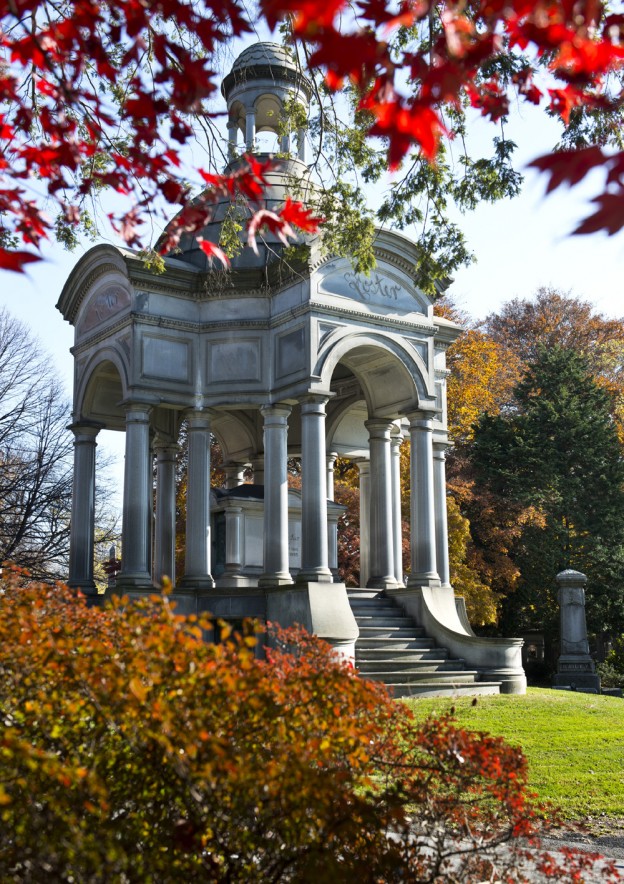
THE GREAT WOODLAWN CEMETERY SCAVENGER HUNT
Saturday, September 26, 2015
Scavenger Hunt starts at 2:00PM; Reception immediately following at The Rambling House
Meet at the Work Gate, East 233rd Street between Katonah Avenue and Vireo Avenue (across from 329 E. 233rdStreet and one block west of Woodlawn’s main entrance at Webster Avenue)
Take the 2 train to 233rd Street or
Metro North to the Woodlawn stop- Only a half hour ride from Grand Central $13 round trip
$10 per team (up to 4 people per team)
Usher in the fall season by exploring one of New York City’s most famed cemeteries!
This fun-filled scavenger hunt of The Woodlawn Cemetery will celebrate some of this National Historic Landmark’s most famous residents, landscapes, and monuments, as well as the adjacent Woodlawn Heights neighborhood, one of the Historic Districts Council’s 2015 Six to Celebrate!
Choose from five themed trails in search of some of the cemetery’s most famous memorials and sites. Each trail covers 1.5 miles (no hills!) of the cemetery’s picturesque lanes, and will last roughly 60-90 minutes.
All you have to do is register your team (up to 4 people per team), either online or at check-in on the day of the event. Once your team is checked in, you will receive a starting time, then follow the clues for your Woodlawn adventure! The first team to finish on each trail will win a prize! All ages are welcome.
Join us after the hunt for prizes and refreshments at the Rambling House, a popular local pub in Woodlawn Heights!
TRAIL #1 Architecture: Search the cemetery for monuments and mausolea designed by New York’s great architects – McKim Mead & White, Carrere & Hastings, and many more.
TRAIL #2 Trains: Find the spectacular mausolea of the infamous robber barons who built America’s railways.
TRAIL #3 Messages in Stone: Look for the beautiful carved flowers, butterflies, birds and trees that are featured on Woodlawn’s unusual monuments.
TRAIL #4 Faces of Woodlawn: Discover the stories of some colorful New York characters as you locate their portraits in bronze, marble, and glass.
TRAIL #5 Great Glass: Peep inside some of the great tombs to locate the wonderful windows that light up in the afternoon sunshine.
Established in 1863, the 400-acre Woodlawn Cemetery is the final resting place of many historic figures and has the largest and finest collection of funerary art in the nation. All proceeds will be donated to the Woodlawn Conservancy.
Sponsored by the Historic Districts Council, Woodlawn Conservancy, and Women of Woodlawn.

Walking Tour: Dean Alvord’s Idea: Victorian Flatbush
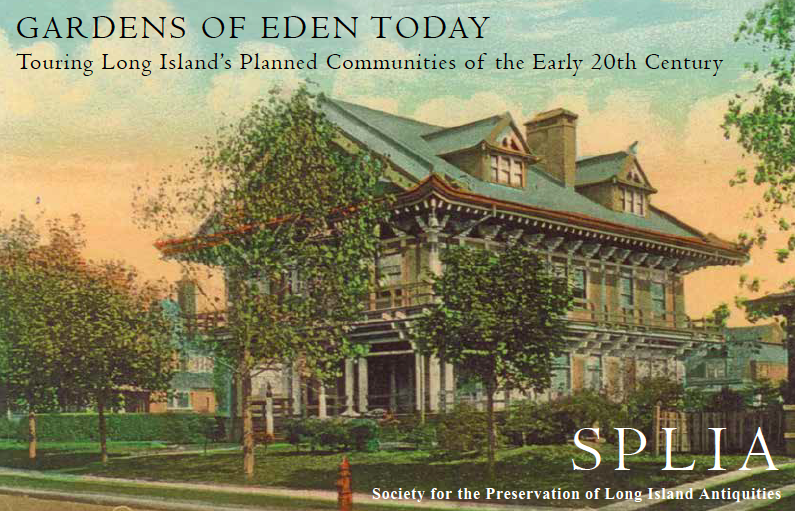
Saturday, October 24, 2015
1PM-3PM
Join Brooklyn native and tour guide Norman Oder on a fascinating, brisk-paced tour featuring enormous contrasts: the stunning mansions of Dean Alvord’s Prospect Park South, the once/still grand apartment buildings of early 20th century Flatbush; civic landmarks like Erasmus High School and theaters along busy Flatbush Avenue repurposed into retail and religious uses, as well as the recently restored Kings Theater.
Reservations are required:
$15 Friends & Young Preservationists (Under 30)
$20 Non-Members
Click here to register
PLEASE NOTE:
Starting points will be provided after tickets are purchased.
All walking tours will proceed rain or shine.
Space is limited.
Co-sponsored with Society for the Preservation of Long Island Antiquities

Artists evicted in TriBeCa for luxury condos
Dear friends: a bittersweet announcement.
I will be moving my studio next week. Things have been a bit quiet around here lately because I have been completely engaged in coordinating the details of finding a new space.
Our sweet, ancient time-out-of-time loft building on West Broadway was sold to developers earlier this year, and all the tenants received eviction notices in May. The new owners intend to demolish all of the buildings on West Broadway between Murray and Warren Streets to build luxury condominiums. The buildings along this stretch have been occupied for decades by dozens of artists and small businesses. This project is part of the irrevocably damaging trend of over development that’s sweeping through New York City right now, and it threatens, in particular, the historic character of the TriBeCa neighborhood where I’ve worked these last few years.
71 West Broadway has been such an incredible place to work. Old buildings have a magic to them that cannot be duplicated. To leave this space knowing that it will be destroyed is a deep heartache that I’ve been grappling with now for months. The light, the old wood, the absolutely frigid days in January, the camaraderie of the neighbors during this ordeal. I am so grateful for all of it.
I will be welcoming visitors this week, to the extent that I am able. If you’d like to come by, please get in touch.
I’m very fortunate to have found a beautiful new (light-filled!) studio in the Garment District through a friend of a friend, where you’ll be able to find me come September 1st, but I want to take this opportunity to start a dialogue about what’s happening to affordable creative space in New York City (and in cities all over the world), and to leave you with some resources, should you feel called to take action:
Lynn at TriBeCa Trust was one of the first people I spoke with about our situation, and she is valiantly fighting to expand historic district protection in TriBeCa (our building is only a few buildings away from the current protected district lines), you can learnmore about her work here, and be sure to sign the petition to protect TriBeCa.
The pioneering work of the Artist Studio Affordability Project is of great interest to me. They are organizing the art community to fight for affordable studio space in New York City.
The Queens Museum & Art F City hosted a conference called Stay in New York in June, and the livestream is available here.
And the Lower East Side Preservation Initiative, an organization that is fighting for the neighborhood where I live, is also worthy of your support.
Also, as a side note, if you know of anyone living in an illegal loft conversion in the city, please make sure they know that the Loft Board registration reopened at the end of this last legislative session in June, and that they may now have the chance to be protected under NYC’s loft laws. More info here.
I love this city too much to stand by while it’s reduced to chain stores and glassy towers, and if affordable creative space is important to you or to those you love, I urge you to get involved, write your elected officials with your concerns, and above all, get to know your neighbors and your community and be truly present in the places where you live and work.
I will leave you with this passage from Jane Jacobs’ book, The Death and Life of Great American Cities, in her chapter entitled “The Need for Old Buildings:
“Cities need old buildings so badly it is probably impossible for vigorous streets and districts to grow without them. By old buildings I mean not museum-piece old buildings, not old buildings in an excellent and expensive state of rehabilitation–although these make fine ingredients–but also a good lot of plain, ordinary, low-value old buildings, including some rundown old buildings.
If a city area has only new buildings, the enterprises that can exist there are automatically limited to those that can support the high costs of new construction. These high costs of occupying new buildings may be levied in the form of an owner’s interest and amortization payments on the capital costs of the construction. However the costs are paid off, they have to be paid off. And for this reason, enterprises that support the cost of new construction must be capable of paying a relatively high overhead–high in comparison to that necessarily required by old buildings. To support such high overheads, the enterprises must be either (a) high profit or (b) well subsidized.
If you look about, you will see that only operations that are well established, high-turnover, standardized or heavily subsidized can afford, commonly, to carry the costs of new construction. Chain stores, chain restaurants and banks go into new construction. But neighborhood bars, foreign restaurants and pawn shops go into older buildings. . . . Well-subsidized opera and art museums often go into new buildings. But the unformalized feeders of the arts–studios, galleries, stores for musical instruments and art supplies, backrooms where the low earning power of a seat and a table can absorb uneconomic discussions–these go into old buildings. Perhaps more significant, hundreds of ordinary enterprises, necessary to the safety and public life of streets and neighborhoods, and appreciated for their convenience and personal quality, can make out successfully in old buildings, but are inexorably slain by the high overhead of new construction.
As for really new ideas of any kind–no matter how ultimately profitable or otherwise successful some of them might prove to be–there is no leeway for such chancy trial, error and experimentation in the high-overhead economy of new construction. Old ideas can sometimes use new buildings. New ideas must use old buildings.”

Upcoming events from the Woodlawn Conservancy
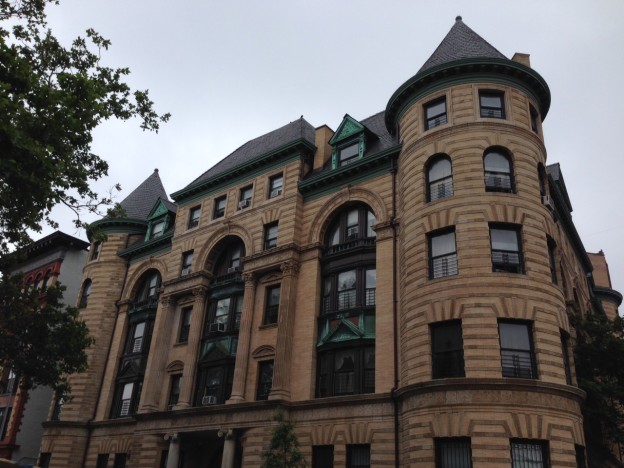
Crown Heights North Walking Tour Pictures
Crown Heights North Walking Tour
Saturday, June 20, 2015
